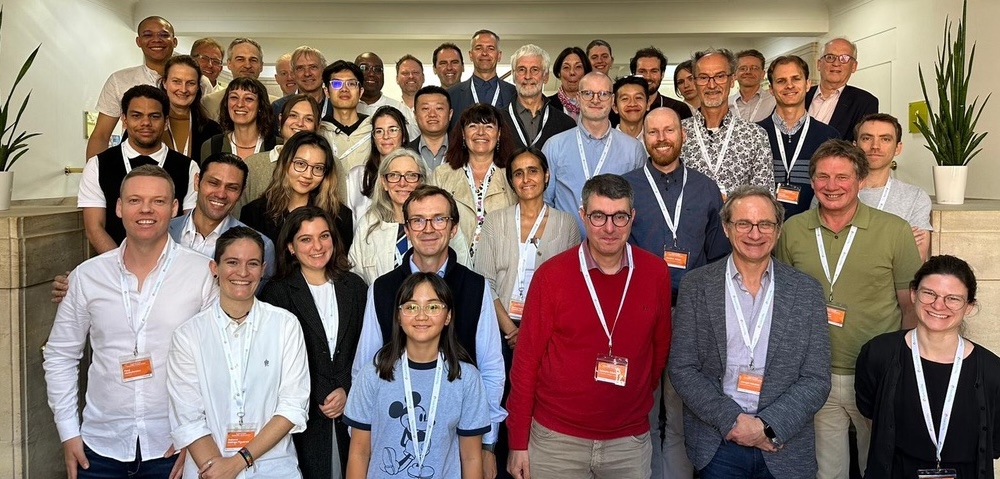Cure CLCN4 Scientific Conference – Highlights for Families

We recently brought together leading scientists and clinicians to share the latest research and ideas to better understand CLCN4-related condition. Here are some key takeaways from the conference, in plain language:
What we are learning about the CLCN4 gene
- CLCN4-related condition is caused by variants or ‘changes’ in the CLCN4 gene. The CLCN4 gene gives instructions to make a protein called ClC-4. It is thought that this protein has important roles in brain and nerve cell function.
- Changes in the CLCN4 gene affect how the ClC-4 protein works inside the cells of an affected individual’s body.
- Research confirms that ClC-4 works closely with a “partner protein” called ClC-3, and if one doesn’t work correctly, the other may try to compensate.
- New partner proteins (called TMEM9A and TMEM9B) have also been recently discovered. These may help control how ClC-4 works in the brain and could be new targets for future treatments.

Animal models can help us better understand CLCN4-related condition
- The recently developed Clcn4-rat models are showing symptoms similar to those seen in some patients, such as hyperactivity, attention difficulties, and coordination issues. Initial results also indicate some issues with learning and memory, but more work needs to be done to confirm this.
- Scientists are also trying to develop a CLCN4 zebrafish model to better understand CLCN4-related condition. Zebrafish are transparent, develop fast, and are cheaper to maintain than rodents, which could help researchers screen hundreds of drugs to find ones that may help. These animals are already helping to find treatments for similar conditions, such as Batten and Dravet syndromes.

Studying CLCN4 variants
- Not all genetic changes (variants) in the CLCN4 gene lead to CLCN4-related condition. There are many healthy unaffected individuals with variants in the CLCN4 gene whose ClC-4 protein works just fine.
- Work is underway to understand which variants are most likely to cause symptoms and how exactly they can affect brain function.
- This work is important to help classify new variants, support diagnosis, and guide treatment decisions in the future.

The human side: more than a diagnosis
- CLCN4-related condition is not just one condition, but a group of related experiences. It is a neurodevelopmental condition with a wide range of symptoms, including learning difficulties, communication challenges, epilepsy, and movement or behavioural differences.
- The severity and specific features can vary significantly, even among individuals in the same family.
- What all individuals with CLCN4-related condition have in common is extraordinary resilience, empathy, and the ability to bring love and connection to those around them

The potential of genetic therapies
- A major focus at the conference was the potential for genetic therapies, treatments designed to target specific errors in a person’s genes.
- New tools can now analyse individual genetic changes and identify which ones might respond to a therapy, like antisense oligonucleotides (ASOs), which are already helping people with other rare conditions.
- Work is also being done using patient-derived stem cells (iPSCs) to create nerve cells in the lab and test treatments directly on them.
- These therapies are still in early stages for CLCN4-related condition, but the technology is moving quickly, and several teams are now working to understand if and how these therapies could be applied to CLCN4-related condition.

Better clinical care and support
- Clinical talks highlighted how other rare conditions have benefited from specialist clinics, coordinated care, and international healthcare networks.
- Cure CLCN4 is now exploring what it would take to establish a CLCN4-specific clinic or care pathway.
- A key step in doing this is establishing collaborations among doctors, researchers, and families.
- Our goal is to make sure families have access to expert care, information and guidance, and coordinated support, not just genetic results.

What’s next
- Researchers plan to run more tests in the Clcn4 rat models, create other CLCN4-related condition models, including animal and cellular models, and explore gene-based therapies.
- Cure CLCN4 is working to link with European and UK networks to improve care and services.
- We will continue to promote access to research tools, support collaboration between scientists, doctors, and families, and grow the patient registry hosted by Simons Searchlight, which plays a vital role in advancing research.

Corporate Foundation Sponsors

